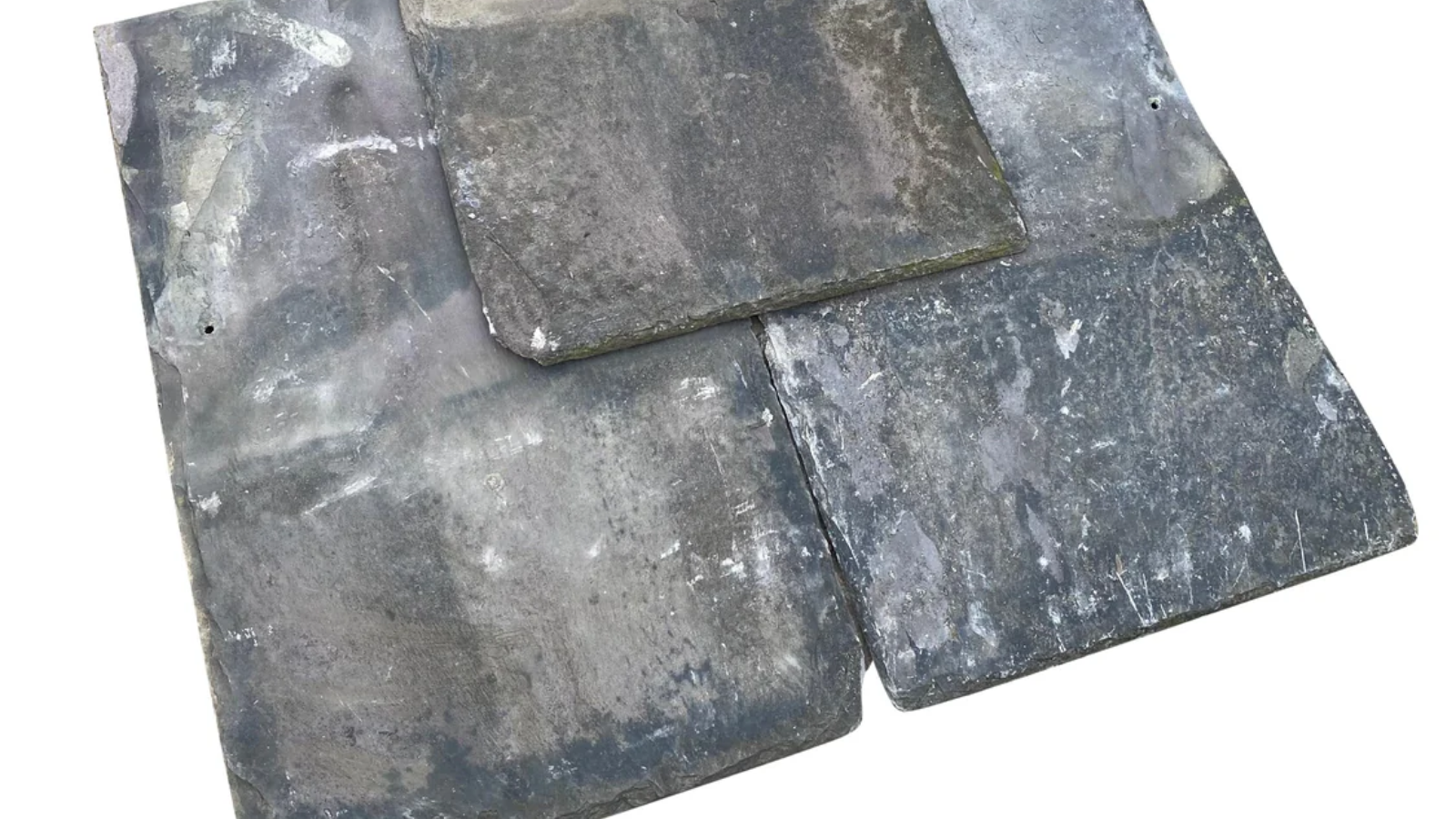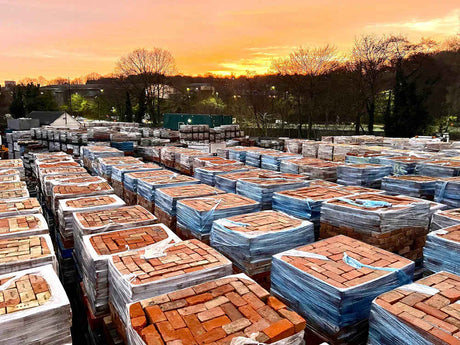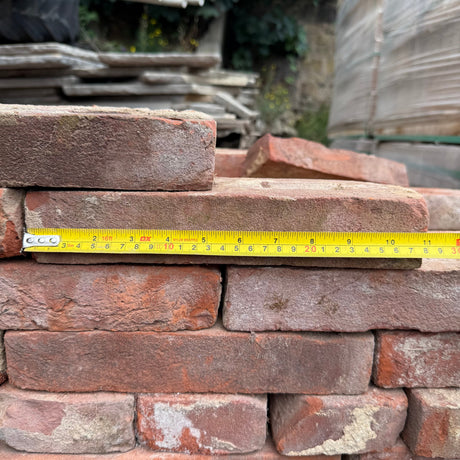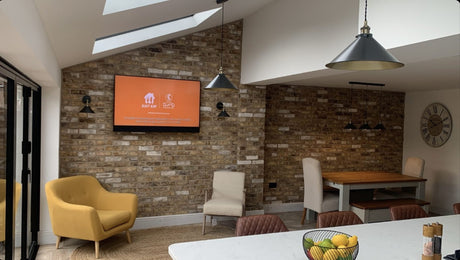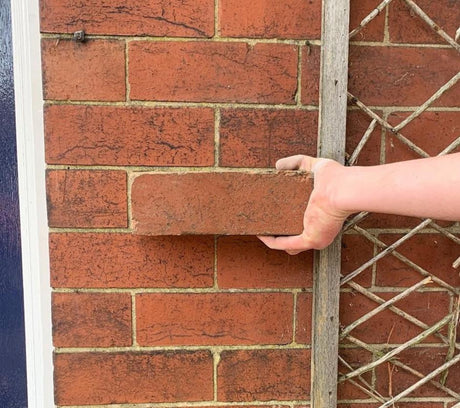Selecting the right materials for construction and design projects can be a challenge. Many people wonder about the best options available that balance durability, aesthetics, and cost.
This is where the word slate comes into play. One common question arises: what are slates used for?
Slate is a natural metamorphic rock known for its strength and beauty, making it a top choice in the construction industry today. This article will explore how slate's versatility extends beyond just roofing to include floors, tiles, worktops, and even swimming pools.
Discover how this durable material can transform spaces with its unique charm and functional benefits. Ready to learn more?
Slate: A Metamorphic Rock of Strength and Durability for Construction
Slate forms from the metamorphism of shale under low-grade conditions. This process involves heat, pressure, and chemical activity changing the original clay minerals into new minerals such as slate formations other rocks such as mica, chlorite, and quartz.
Over millions of years, these changes crystallise to form slate stone, a durable and fine-grained natural material with a distinctive cleavage that allows it to be split into thin sheets.
Slate symbolises strength and durability; its formation is an impressive testament to nature's powerful geological processes.
This rock possesses qualities like being fireproof and waterproof which make it ideal for various uses in construction. Its uniqueness mineral composition comes from its formation journey through ages of sedimentary layer compression and mineral reformation.
Slate is highly sought after for roofing tiles due to these characteristics alongside its aesthetically pleasing appearance.
What is natural slate made of?
Slate originates from natural stone, specifically a type of sedimentary rock known as mudstone. Over time, intense heat and pressure transform mudstone into the durable material we call slate.
This process infuses natural slate, with characteristics such as waterproofing and fire resistance, making it an unbeatable choice for various construction uses.
This transformation also imbues slate with unique textures and colours. Minerals like chlorite, hematite, and pyrite contribute to its grey, green, and sometimes reddish tones. These features make every slab of slate distinct in appearance, offering elegance along with practical benefits in construction projects.
How does slate form?
Slate forms from mudrock under the earth’s surface. Over millions of years, this process happens because volcanic ash or clay gets buried and subjected to intense heat and pressure.
This causes the original minerals to realign into thin, flat layers. The transformation requires just the right conditions: not too much heat, otherwise the mineral grains in the rock might melt completely, turning into a different type ecological material altogether.
These ideal conditions are found in regions with a history of volcanic activity or where tectonic plates meet. Here, slate undergoes metamorphosis, changing from its humble beginnings as sediment into durable, cleavable stone.
It's fascinating how such an everyday material has origins linked deeply with dramatic geological phenomena like volcanoes and plate tectonics.
Moving on from how a slate plate is formed, let's explore slate industry and why it is highly sought after for roofing materials.
What are the characteristics of slate stone?
Slate stone stands out for its durability, making it a top choice for both roofing and flooring. This natural, slate stone comes from fine-grained sedimentary rock, composed of clay or volcanic ash that has undergone low-grade metamorphism.
Its unique cleavage allows it to be split into thin, flat sheets, which are ideal for various uses in construction. Being fire resistant and weather resistant adds to the appeal, making slate tiles perfect for areas exposed to the elements.
The texture of slate is another defining feature, with various shades offering a range of aesthetic qualities from rustic to modern elegance. With colours ranging from grey, green, purple, to black, designers and homeowners can select options that best fit their project's theme.
Moving on from characteristics, let's explore how these traits make slate an excellent material for roofing applications.
What Are Slates Used For in Roofing?
Slate is an excellent candidate for a roofing material, due to its longevity and weather resistance. Its inherent strength enables it to endure intense wind, substantial rainfall, and even fire.
This durability implies that a slate roofing tile that can persist for over a century with appropriate upkeep. Slate roofing that is often the choice for roofing, appreciated for its practical advantages as well as its classic aesthetic.
Those involved in construction often gravitate towards using the slate roofing tiles owing to its minimal absorption rate, which heightens its resistance to frost damage and minimises leaks. The potential of this material to be split into very thin sheets or panels enables roofing contractors to construct roofs that are both durable and sophisticated.
The distinct texture and colour variations in slate also amplify the visual appeal of structures, providing architects and property owners with a broad range of design options.

What makes slate a good roofing material?
Slate is a highly enduring material for roofs, preferred by many due to its extensive lifespan that can surpass a century. Its resilience against fire and pollutants makes slate roofs a secure option for residences and structures.
This natural stone also performs well in extreme weather, maintaining its stability against tempests and heavy rainfall. These attributes render it a superior option for all other roofing materials, offering assurance about the safety and longevity of one's dwelling or initiative.
Another benefit is its enduring aesthetic that imparts elegance to any building endeavour. Slate is available in a range of colours, from grey to green, offering architects and designers the freedom to personalise appearances based on their style preferences.
The material provides practical advantages while also improving the overall aesthetic appeal of structures, making it ideal for both conventional and contemporary designs. Given such versatility and performance aspects, slate remains a principal choice for professionals in the building sector.
What are the benefits of a slate roof tiles?
Choosing slate as a roofing material offers numerous advantages for homes and buildings. Known for its natural beauty and durability, it has a long tradition as a construction material favoured by professionals in the building industry. Here are the key benefits:
-
Longevity: A well-installed slate roof can last over 100 years, significantly longer than roofs made from other materials.
-
Fire resistance: Slate is naturally fireproof, greatly reducing the risk of fire spreading from airborne sparks or embers.
-
Aesthetic appeal: With its timeless look, slate adds elegance and character to any structure. Its unique texture and colour variation can enhance the architectural style of a building.
-
Environmental impact: Slate has a low embodied energy due to its natural formation process, making it more eco-friendly compared to synthetic roofing materials.
-
Increase in property value: Buildings with slate roofing often have higher market values and appeal more to potential buyers.
-
Low maintenance: Slate roofs require minimal maintenance as they resist mould and fungus growth.
-
Durability: It withstands harsh weather conditions, including heavy rain, high winds, and snowfall without deteriorating quickly.
-
Recyclability: Old slate can be reclaimed and reused on other buildings, reducing waste and promoting sustainable construction practices.
Exploring further into how slate serves beyond roofing will showcase its versatility across different applications in modern construction.
How long does a slate roof last?
Slate roofs have garnered a reputation for durability, often outstripping the longevity of the buildings they shelter. With proper installation and maintenance, they can persist for over a century, making them a viable choice for architects, builders, and homeowners who place sustainability and aesthetics at the forefront of their construction material considerations.
Slate's inherent strength, paired with its resilience to both weather and fire, plays a considerable role in extending its lifespan.
Slate's elemental resistance provides long-lasting assurance for many generations.
In regions where rooftops have to endure severe weather conditions, such as substantial snowfall or gale-force winds, a slate roofing top's capacity to bear such pressures without yielding performance is highly prized.
Moreover, slate's enduring splendour ensures that it continues to be a popular choice for its toughness and ability to heighten the architectural charm of edifices throughout Europe and the United States.
What are the Different Uses of Slate Tiles?
Slate tiles provide a flexible solution for both indoor and outdoor environments, proving to be a favourite for architects, builders, and homeowners alike. In bathrooms, their ability to resist water prevents moisture damage, yielding a safe and enduring surface.
Kitchens enjoy the advantage of slate's heat resistance, giving them an optimal material for floors that encounter high temperatures. Plus, their distinct texture contributes to the aesthetic beauty of any kitchen design.
Outdoor utilisation of slate tiles encompasses garden paths, patios, and porch flooring. Their inherent slip resistance guarantees safety in damp conditions while keeping the beauty of the scenery intact.
What's more, slate can tolerate intense weather alterations without developing cracks or erosion over time. This long-lasting nature makes it appropriate for areas that face regular temperature shifts or heavy pedestrian movement.
How can slate tiles be used in bathrooms?
Slate tiles introduce a touch of natural elegance to bathrooms, offering a strong and water-proof flooring choice. Professionals in architecture and design appreciate the slate roof tiles for its distinct texture and colour variations, which can turn any bathroom into a fashionable sanctuary.
These tiles are employed not just as flooring but also to create striking features on walls or as decorative backsplashes behind sinks. The inherent skid resistance of slate presents it as an excellent selection for damp areas, ensuring safety without compromise on style.
Homeowners appreciate the long lifespan that comes with introducing the slate roofing tiles into their bathrooms. With adequate maintenance, these tiles can endure for decades, offering a sense of security in tandem with visual attractivity.
Slate's resilience against stains and easy-to-care nature makes it perfect for busy bathroom areas. Whether selecting dark hues or lighter tones, slate tiles convey enduring sophistication to bathroom designs whilst addressing practical necessities in both home and business environments.

What are the benefits of using slate tiles in kitchens?
Slate tiles bring a unique appeal to kitchen spaces, known for their durability and aesthetic versatility. They offer various practical benefits that can enhance any kitchen design.
-
Natural beauty: Slate tiles come in a range of earthy tones. Each piece has distinct patterns, making your kitchen floor or wall uniquely beautiful.
-
Durability: These tiles are extremely resilient against everyday wear and tear. They resist scratches and chips, perfect for high traffic areas like kitchens.
-
Easy to clean: Spills and stains can be wiped away easily from slate surfaces. This makes them ideal for use where food preparation happens.
-
Adds value: Slate floors or backsplashes can increase a home's market value due to their luxury look and long-lasting qualities.
-
Fireproof properties: Being naturally fire-resistant, slate is safe for use near stoves and ovens.
-
Improves indoor air quality: Unlike some materials that can emit volatile organic compounds (VOCs), slate contributes to a healthier kitchen environment.
-
Versatile designs: Architects and designers favour slate for its flexibility in matching various decor styles, from rustic to modern.
-
Suitable for underfloor heating: Slate’s natural ability to conduct and retain heat makes it suitable for kitchens with underfloor heating systems.
-
Low maintenance costs: Once sealed, slate requires very little upkeep to maintain its look over the years.
-
Eco-friendly choice: As a natural stone, using slate supports eco-conscious building practices.
Experts in construction and design recognise these benefits when choosing materials for new projects or renovations, making slate tiles a popular choice among homeowners as well.

Are slate tiles suitable for outdoor use?
Quarry tiles offer excellent longevity and are ideal for exterior usage, making them a perfect selection for paving, courtyards, and landscaping. Their inherent resistance to extreme weather conditions, such as freeze-thaw cycles, exemplifies their adaptability to various climates.
These tiles also have a distinctive texture that provides grip, a crucial aspect for outdoor safety.
The versatility of slate enables it to integrate flawlessly into any outdoor environment.
Owing to the inherent durability and longevity of slate, professionals within the construction field favour using it in endeavours that require both visual charm and practicality. Tiles fabricated from slate enhance the attractiveness of alfresco areas while also providing a durable surface resistant to scuffs and discolorations.
This hardiness makes them an economically wise choice over the long run.
Why is Slate a Popular Choice for Flooring?
Slate floors stand out for their durability and resistance to pollutants, making them an ideal material for both homes and commercial spaces. This natural stone withstands high traffic areas with ease, maintaining its beauty over years of use.
The unique textures and colour variations found in slate also offer interior designers a wide palette to work with, ensuring each flooring project can be customised to fit the desired aesthetic.
Maintaining slate flooring is simpler than one might expect. Regular sweeping and occasional damp mopping are all it takes to keep these floors looking pristine. Because slate is resistant to stains, spills can be cleaned up without leaving behind any marks, providing peace of mind for homeowners and professionals alike.
Slate's fireproofing capabilities add an extra layer of safety in kitchens or near fireplaces, proving that this material combines practicality with visual appeal effortlessly.

What are the advantages of slate floors?
Slate floors bring beauty and durability to any space, making them a top choice for architects, builders, and homeowners. The material's natural variation in colour and texture adds unique charm to interiors.
-
Durability: These floors withstand high traffic, making them perfect for busy homes and commercial spaces.
-
Easy Maintenance: Spills wipe up easily from slate, requiring only regular sweeping and occasional mopping.
-
Increase in Property Value: Adding slate flooring can boost a property’s market value due to its luxury appeal.
-
Natural Look: Every slate tile offers a unique pattern, enhancing the room with an organic feel.
-
Resistant to Fire: Unlike wood or carpet, slate does not burn, adding an extra layer of safety to homes.
-
Eco-Friendly: As a natural stone, slate is more environmentally friendly compared to manufactured flooring options.
-
Temperature Regulation: Slate stays cool in summer yet conducts heat well when used with underfloor heating systems in winter.
-
Long-Lasting: Properly installed and maintained slate can last for decades without needing replacement.
-
Wide Range of Finishes: From smooth and polished to rough and textured, slate tiles are available in various finishes that suit different design aesthetics.
-
Suitable for Outdoor Use: Slate's natural resistance to weather conditions makes it ideal for patios or outdoor pathways besides indoor use.
With these advantages, it's clear why many choose slate as their flooring material for both new projects and renovations.
How do you maintain slate flooring?
Maintaining slate flooring requires regular attention to keep its beauty and durability intact. This natural stone offers a striking finish for any room but demands specific care to remain in top condition.
-
Sweep the floor daily to remove debris and dust. This prevents scratching.
-
Mop the floor weekly using a mild detergent mixed with warm water. It helps in avoiding stains.
-
Immediately clean up spills to prevent the slate from staining, especially from acidic substances like wine or lemon juice.
-
Apply sealant annually to protect the slate from moisture and stains. Sealing enhances its longevity.
-
Avoid using harsh chemicals for cleaning, as they can damage the slate’s surface.
-
Place mats at entrances to reduce the amount of dirt brought onto the flooring.
Following these steps ensures your slate flooring remains attractive and lasts longer, making it a perfect material for homes and commercial spaces alike.
Exploring further into modern construction, let's examine how builders and architects incorporate the blank slate, in new building designs.
What makes slate floors durable?
Slate floors owe their durability to the unique properties of natural slate, as a material. Slate is extremely durable due to its resistance to water and ability to withstand high traffic areas.
Its formation, under intense heat and pressure, creates a hard, dense stone that resists scratches and chips. This natural process ensures slate flooring lasts for many years without showing significant wear.
This type of floor also benefits from natural pollutant resistance which makes it an excellent option for homes and public buildings alike. Its low absorption rate means spillages do not penetrate easily, preventing stains and damage.
With proper care, a slate floor can maintain its beauty over decades, making it a favoured choice among architects and designers seeking long-lasting construction materials.
How is Slate Used in Modern Construction?
Builders and architects favour slate due to its longevity and aesthetic appeal, making it a primary selection in contemporary construction. They frequently utilise slate in building cladding for protection against weather deterioration while providing a stylish finish.
The material's inherent resistance to pollutants also prolongs the lifespan of structures, ensuring their resilience against environmental factors.
In paving and landscaping, contractors appreciate slate for its flexibility and attractiveness. It acts as a durable base while bringing a refined touch to gardens and walkways. The aesthetic advantages of slate blend effortlessly into construction designs, offering texture and shade that work well in any environment.
This method of production process demonstrates how conventional materials can fulfil current demands without sacrificing efficacy or style.
Slate unifies ageless elegance with unmatched durability, underlining its ongoing significance in today's architectural designs.
What are the uses of slate in building cladding?
Slate cladding provides a stylish and long-lasting choice for modern construction, garnering the preference of architects and builders. Its distinct texture and varied hues contribute aesthetic value to any building's exterior.
The sturdy characteristic of slate ensures that constructions are safeguarded from severe weather elements, like massive rainfall and powerful wind gusts. This attribute positions slate as a suitable material for both living and working spaces.
Employing slate in building cladding has purposeful benefits too. It serves as a natural insulator, keeping structures cosy in winter and refreshing in summer. This can result in noticeable energy conservation over time.
Besides, given its minimal water retention, slate aids in guarding against moisture damage, trimming maintenance expenses for property holders. With these benefits, it's clear why the application of slate in cladding persistently expands in the construction sector.
How is slate used in paving and landscaping?
Transitioning from the use of slate in building and wall cladding, its role in paving and landscaping emerges as equally significant. Architects, builders, contractors, interior designers, and homeowners greatly value this versatile material for outdoor spaces.
Here are detailed ways slate is utilised in paving mountain building and landscaping:
-
Slate tiles create elegant walkways. Their natural appearance blends with outdoor settings.
-
As stepping stones in gardens, slate offers a durable path that withstands weather conditions.
-
In patio designs, large slate slabs provide a sophisticated look that complements garden furniture.
-
Slate chippings are used for decorative garden borders and paths, enhancing drainage while adding texture.
-
For driveways, compacted slate chippings offer a solid surface that's attractive and pollutant resistant.
-
Water features benefit from slate's resistance to algae and chemicals; it remains sleek around ponds and fountains.
-
Landscapers use slate to build retaining walls that are sturdy yet aesthetically pleasing.
-
It serves well as mulch in flower beds, retaining moisture while deterring weeds with its weight.
-
Outdoor kitchens and barbecue areas frequently feature slate countertops due to their heat resistance and beauty.
-
Slate's slip-resistant texture makes it ideal for pool surrounds, reducing the risk of accidents in wet areas.
-
In colder regions, its low absorption rate prevents cracking from freeze-thaw cycles, ensuring longevity of outdoor installations.
-
Garden steps made of slate merge functional safety with natural aesthetics due to their rough texture preventing slips.
Every application showcases how architects and designers harness the durability and visual appeal of slate to craft inviting outdoor spaces that stand the test of time.

What are the aesthetic benefits of using slate in construction?
Slate contributes a native sophistication to any construction endeavour. Its unique texture and rich colour selection provides architects and designers with the flexibility to generate unique, sophisticated aesthetics.
Whether utilised in roofing, flooring, or as ornamental wall cladding on buildings, slate’s attractiveness boosts the visual allure of constructions. It presents an appealing contrast between its rustic charm and contemporary design sensibilities.
The attractiveness of slate is in its natural variation; no two slates are exactly alike.
Moreover, slate's capability to resist weathering means it maintains its attractive appearance over time. This resilience makes it a functional choice for construction but also makes certain that the aesthetic elements are enduring.
Employing a clean slate can transform common areas into stunning exhibitions that lead in both residential and commercial environments.
Investigating the numerous uses of green slate displays further chances for intensifying design projects.
What are Some Unique Uses of Slate Today?
Green slate has found its way into worktops and countertops, offering a durable and aesthetically pleasing option for kitchens. Its natural beauty adds a unique charm to the heart of the home, making it a favourite among homeowners seeking both functionality and style.
This material manages heat well, making it an excellent choice for areas prone to very hot temperatures and pots and pans that handle hot temperatures.
Another innovative use of slate is in swimming pools. Builders often recommend slate for pool surrounds due to its slip resistance and ability to withstand harsh chemicals. The rock's texture provides a safe walking surface even when wet, ensuring that beauty does not compromise safety.
Homeowners favour this option as it blends performance with elegance, transforming outdoor spaces into luxurious retreats.
What are the uses of green slate?
Green slate finds its way into various applications, both in interior design and outdoor landscaping. Builders and architects favour this material for its distinct colour, which adds an earthy yet elegant touch to any space.
In homes, green slate serves as a durable option for flooring, offering a unique aesthetic appeal unlike more common materials. Its natural resistance to slips makes it ideal for bathroom floors where safety is paramount.
For outdoor spaces, designers use green slate in paving paths or patios, blending functionality with natural beauty.
This versatile stone also becomes part of garden designs as stepping stones or edging, harmonising with the greenery. Its ability to withstand weather conditions ensures that structures made from green slate remain intact for years.
Transitioning now to how this material works wonders indoors - let’s explore its impact on worktops and countertops next.
How is slate used in worktops and countertops?
Moving from the uses of green slate, we now explore how the natural slate rock becomes a key material in crafting worktops and countertops. Architects, builders, contractors, interior designers, and homeowners increasingly favour this rock for its unique texture and durability.
Slate worktops stand out due to their resistance to heat and low porosity. This makes them an ideal choice for kitchens where exposure to hot pots and spills is common.
Slate countertops offer a natural beauty that complements both traditional and modern designs. The variety in colours—from grey, green, to purple—allows for flexibility in design choices.
Professionals in construction appreciate slate's ease of maintenance; simple cleaning methods keep these surfaces looking pristine over years of use. Its long tradition as a building material testifies to its lasting resilience and aesthetic appeal in home designs.
What are the benefits of using slate in swimming pools?
Transitioning from the versatile use of colored slate in worktops and countertops, its application extends to enhancing swimming pools as well. Slate boasts a number of features that make it an exceptional choice for surrounding swimming pool areas.
-
Slate's natural slip resistance provides a safer walking area, significantly reducing the risk of slips and falls around wet pool edges.
-
This material has excellent durability, standing up well against constant water exposure and harsh chemicals commonly found in pool maintenance.
-
Being resistant to heat, slate remains cool underfoot even on hot days, offering comfort for swimmers moving around the poolside.
-
Slate tiles come in a variety of colours and textures, allowing architects and designers to create unique, aesthetically pleasing pool surroundings that complement different styles.
-
Its ability to withstand changing temperatures without cracking ensures long-term performance across all seasons.
-
Maintenance is straightforward with slate; it requires only regular cleaning to keep its natural beauty intact without the need for expensive or extensive upkeep routines.
-
The longevity of slate means it can last many years, making it a cost-effective option for swimming pool areas considering its minimal need for replacement or repair.

Conclusion
Slate's versatility shines in its many uses, from roofing to decorative tiles. Its durability makes it a wise choice for both indoor and outdoor applications. Opting for a a slate roofing tiles means embracing a traditional material, that combines beauty with longevity.
For those considering slate, numerous resources and expert advice are available to guide your decisions. Let this robust stone transform your next project into something truly special.
Embrace the change; let slate's natural elegance elevate your space today.
